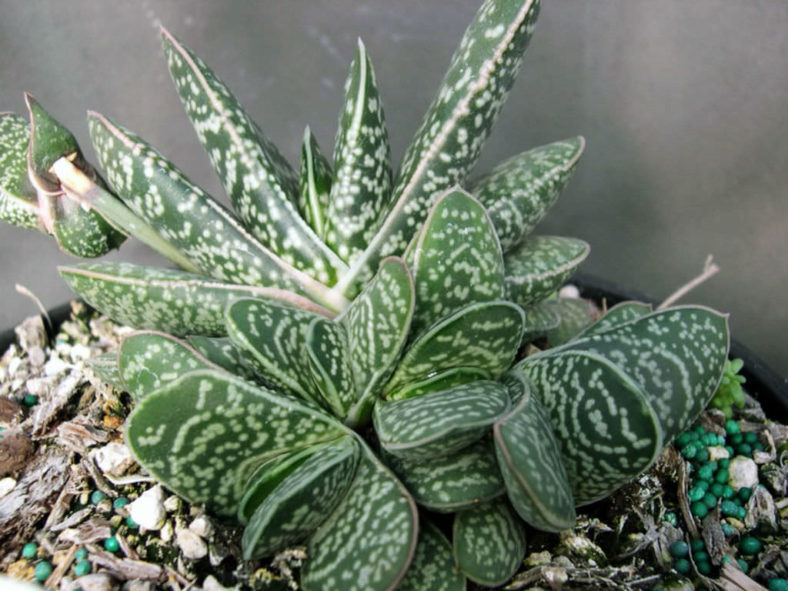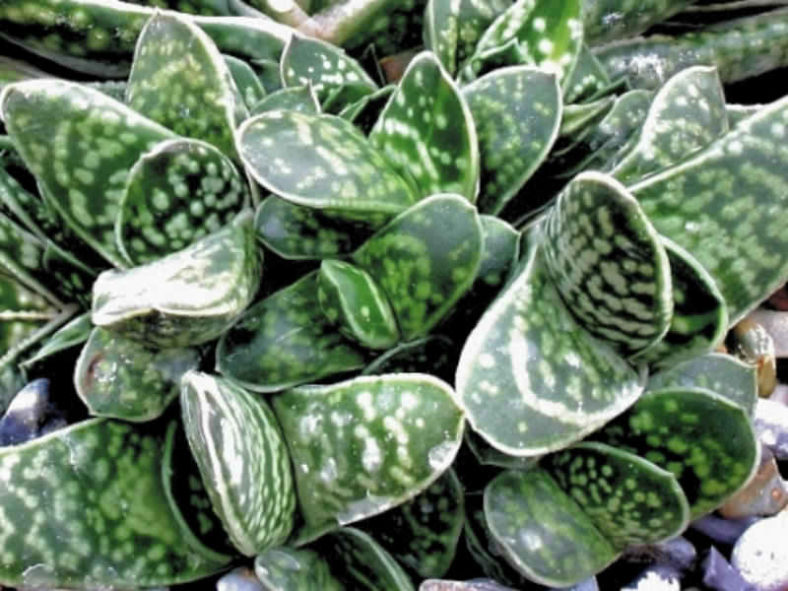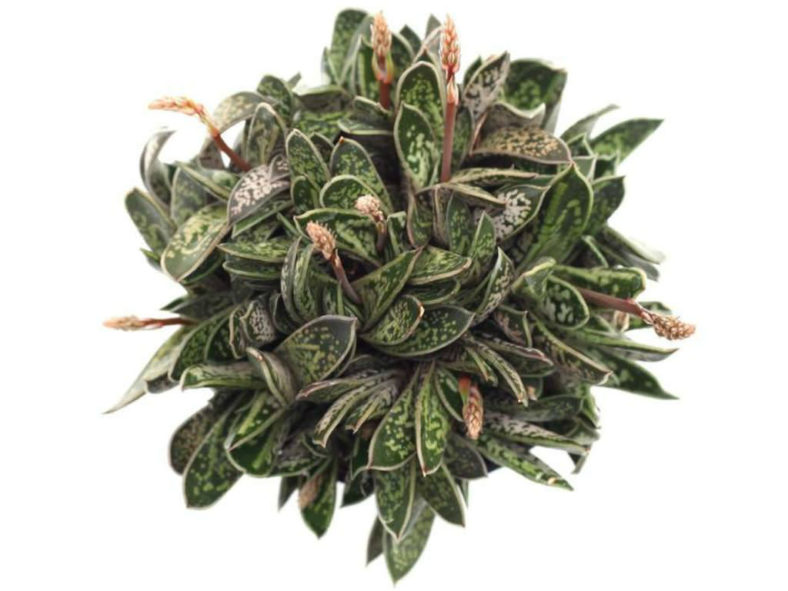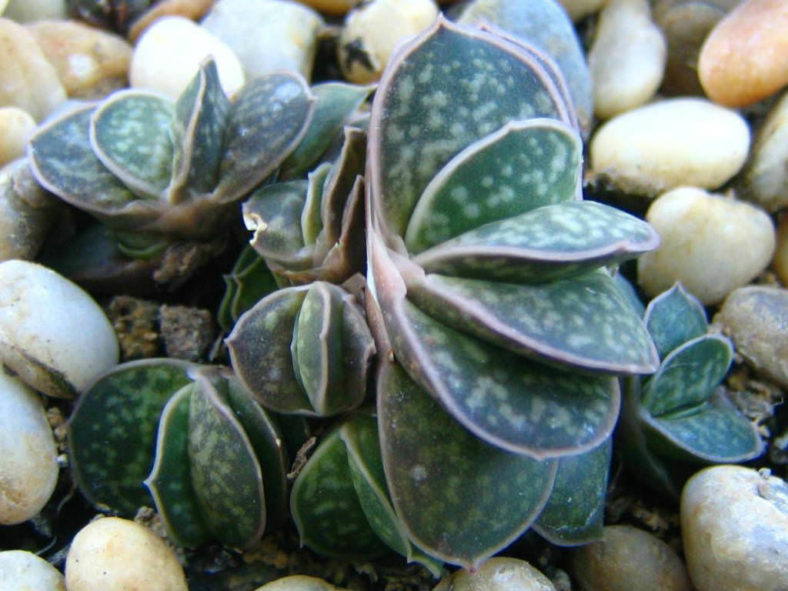Scientific Name
Gasteria bicolor var. liliputana (Poelln.) Van Jaarsv.
Accepted Scientific Name
Gasteria obliqua (Aiton) Duval
Common Name(s)
Dwarf Gasteria, Dwarf Lawyer's Tongue
Synonym(s)
Gasteria liliputana
Scientific Classification
Family: Asphodelaceae
Subfamily: Asphodeloideae
Tribe: Aloeae
Genus: Gasteria
Etymology
The specific epithet "liliputana" (pronounced "lil-ee-pyoo-TAH-na") means "with branched inflorescences, tufted, paniculate, with panicles" and refers to the size of this variety.
Origin
Gasteria bicolor var. liliputana is native to South Africa (Eastern Cape).
Description
Gasteria bicolor var. liliputana is a dwarf succulent with dark green, distichous or spirally arranged leaves mottled with white spots. It can grow up to 4 inches (10 cm) tall and usually proliferates from the base, forming a small clump. The leaves are smooth, rarely slightly tuberculate, and can measure up to 4 inches (10 cm) long and 0.6 inches (1.5 cm) wide.
The hanging flowers can reach a length of 0.6 inches (1.5 cm), with a variable diameter of the gasteriform portion. They are bicolored, reddish-pink and green, and appear from mid-winter to late spring, with a peak in early spring and occasionally throughout the year. The inflorescence is simple, sometimes with a pair of side branches, and can grow up to 16 inches (40 cm) long.

Hardiness
USDA hardiness zone 10a to 11b: from 30°F (-1.1°C) to 50°F (10°C).
How to Grow and Care
Gasterias are often grouped with Haworthia because the plants have similar cultural requirements. Both are attractive, small succulents that can tolerate somewhat more shade than many succulents, making them more suitable as houseplants. Gasterias are susceptible to fungal infections, which usually appear as black spots on the leaves. These result from too much humidity or water on the leaves, but they should not spread too quickly. Gasterias have a natural defense mechanism against such fungal attacks, and they attack the invading organism and seal off the wounded spot. Generally, any place where Haworthia and Aloe thrive will be hospitable to a Gasteria.
Gasterias are small, shallow-rooted, and relatively slow-growing. Therefore, they are often grown in small clusters in wide, shallow dishes. Over time, clusters will naturally enlarge as the mother plant sends off small plantlets. When the cluster has outgrown its container, repot it into a new, wide, shallow dish with fresh potting soil in the spring or early summer. This is also the time to take offsets for propagation.
See more at How to Grow and Care for Gasteria.
Links
- Back to genus Gasteria
- Succupedia: Browse succulents by Scientific Name, Common Name, Genus, Family, USDA Hardiness Zone, Origin, or cacti by Genus
Photo Gallery
Click on a photo to see a larger version.


